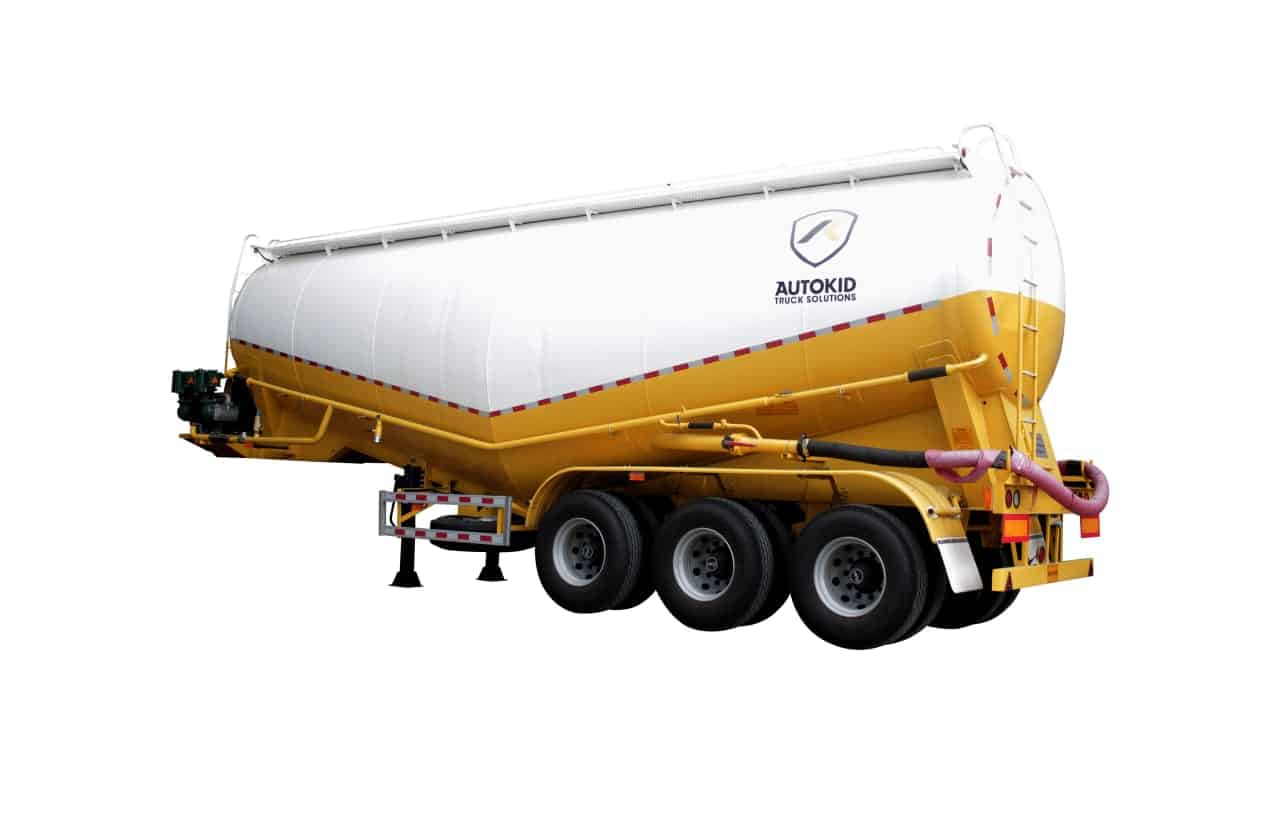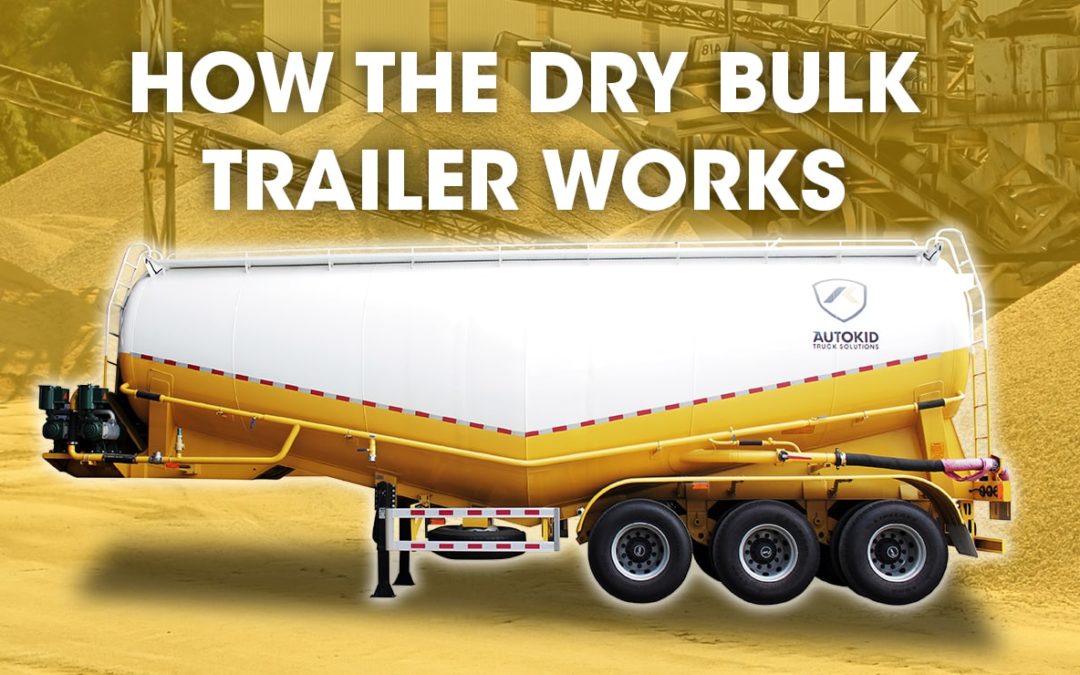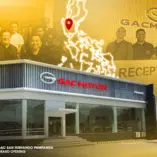What are dry bulk trailers?
Dry bulk trailers, also known as pneumatic trailers, are specialized tankers used to transport dry powder materials such as cement, ash, lime powder, ore powder, granular alkali, et cetera. These materials are so refined that they would make a mess if they are transported using ordinary carriers such as dumpers.

A CIMB Dry Bulk Carrier
How do dry bulk trailers load and unload?
Dry bulk trailer carriers consist of a large tank with a series of tubes and an engine that regulates air pressure within the tank to contain dry powder materials.
Loading
The steps below describe how dry bulk trailers load dry powder materials:
- Before opening the manhole, make sure to decompress the tank first by opening the pressure relief valve. Without doing so, opening the manhole may be dangerous due to the sudden change of air pressure in the tank.
- After opening the manhole, set the filter first before you start loading.
- Load the dry powder material into the tank.
- When you finish loading, clean the sealing ring of any material residue. Doing so will ensure a tight seal for the manhole cover as you close it.
- After sealing the manhole cover, close the pressure relief valve to start pressurizing the tank once again.
- Double-check if everything is sealed tightly. Check the butterfly valve used for discharging if there is cement leakage.
Unloading:
To unload dry powder materials from a dry bulk trailer, here are the steps:
- Dock the discharge pipe and secure it with a sealing ring.
- Open the air inlet valves both front and rear.
- Close the pressure relief valve, the external source valve, the secondary blowing valve, and the butterfly valve for discharging.
- Start the engine but let it gradually pick up speed for a smoother discharge.
- When the air pressure reaches the desired amount, free the discharging pipe by breaking the secondary auxiliary blow valve loose.
- Make sure that there is no blockage in the discharging pipe before closing the secondary auxiliary blow valve.
- Open the discharging butterfly valve when the pressure rises to free some of the pressure that has built up.
- You will know that the dry power material inside the tank is almost fully discharged when you see a significant drop in the pressure.
- Secure the front air intake valve and activate the rear air intake valve.
- Keep an eye on the pressure gauge. If you observe a rise in pressure, there is still residual material inside the rear end of the tank. You will know if the residue is unloaded once the pressure drops.
- Confirm if all residue is cleared from the tank.
- After clearing the tank of all residue, turn the engine and the air compressor off.
- Have the pressure relief valve open and make sure that the discharging butterfly valve is closed.
- Have the discharge quick connector removed, then disconnect the discharging pipes from the vehicle.
CIMC Bulk Carrier Trailer available at Autokid
Autokid Truck Solutions is an exclusive distributor of the CIMC Bulk Carrier Trailer which can hold up to 45 cubic meters of dry powder cement. Interested in getting one for your business? Give us a call at +639176530000.






